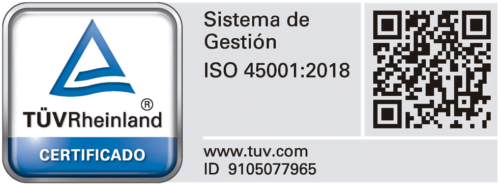Digitalization as a key factor in advancing towards sustainability and compliance with the SDG


At this time of major environmental changes, the companies that will lead these changes will be those that, based on DIGITALIZATION, develop new capabilities based on information derived from key data. In this way, they will be able to advance in the objectives of SUSTAINABILITY, such as managing their carbon footprint and greenhouse gas emissions, optimizing their own processes and consumption of materials and energy, adopting an increasingly efficient and sustainable operation and maintenance strategy for the future.
Today, globally, businesses and citizens are at the center of a huge shift towards sustainability and renewable energy sources. This transition is having a profound impact on society and is driving the industry’s own transformation at an accelerated pace.
The linchpin of all these initiatives was the 2015 UN summit at which all member states adopted the 17 Sustainable Development Goals (SDGs) as a universal call to action to end poverty, protect the planet, and improve the lives and prospects of people around the world, as part of the 2030 Agenda for Sustainable Development.
The most relevant movements in this direction are taking place today towards sustainable energy production and consumption and the move towards more livable cities in terms of energy, water and waste management, while companies and industries in general are striving to find new and additional ways to optimize the energy efficiency of their operations.
For companies and industries, intelligent operations and maintenance management is proving to be the key factor in moving safely towards sustainability.
By combining current consumption data with desired projections, companies are able to understand what is currently happening in their operations and can therefore act on that strategic information to improve organizational performance and deliver the best sustainability results.
Therefore, it is a requirement to have updated information on the facilities and equipment that are part of these operations and maintenance to be able to design general and specific plans to make the operations sustainable in the future.
Today IDP has extensive experience in this regard, and its contribution to the sustainability of the industry is based on three axes:
- Digitalization: IDP has more than 20 years of experience in the efficient use of BIM technologies. With more than 8000 completed projects, we have created digital repertoires of architecture, facilities and infrastructure that have enabled the planning of projects using a tight integration of project and maintenance systems for a fully digital allocation of workload, equipment, spare parts and logistics services.
This has resulted in the optimization and efficiency of the facilities, as the supply of raw materials, resource estimation, cost sizing and overall optimized planning have avoided any unnecessary waste, cost overruns in terms of underutilized raw materials and uncoordinated problems.
- Digital Twin: IDP’s Digital Twin allows the incorporation, control, monitoring and management of data from sensors and meters integrated to energy consumption or generation devices, as well as water, gas and other equipment related to energy efficiency and carbon footprint. At the same time, this equipment is usually referenced to assets for which detailed geometric and parametric information is available, thus achieving maximum transparency and assistance in the management of equipment and a 360-degree understanding of all the client’s facilities.
Thus, with IDP’s Twin, measurements are taken (in real time if the situation requires it) and through a detailed analysis of the technical data, consumption and different alternatives can be analyzed in order to optimize operations in terms of sustainability and, at the same time, guarantee their profitability. Typically, our commercial and industrial customers with more complex asset structures and higher energy requirements tend to avoid costly energy peaks and, at the same time, want to guarantee the permanent availability of their infrastructures, both characteristics that are often found in IDP’s Digital Twin.
- Digital solutions: Today, smart solutions allow companies to analyze a range of scenarios to understand – based on geospatial data – the main actors working against the sustainability of their operations and the main vulnerabilities to optimize. Artificial Intelligence and advanced analytics algorithms enable various high-quality analyses and simulations to work on the basis of imported measured data, whether from smart electricity meters, air-conditioning systems, gas leakage, transport of dangerous goods or waste management.
And all of this in pursuit of the following objectives:
- Reduction of CO2 emissions, through monitoring and optimization of operations.
- Reduction of water use by optimizing water collection, pumping, desalination, potabilization, distribution, storage, sanitation, purification and reuse models.
- Circularity in waste, using, for example, composting for carbon recovery from soils, or in landfills, reducing the CO2 footprint by recovering methane for energy generation.
Let us help you implement sustainability and digitalization strategies in your company’s asset management.









